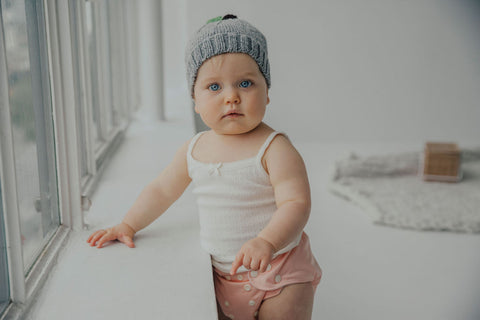Reusable vs. Disposable Nappies: What You Need to Know
Is there anything cuter than a baby? They’re the apple of one’s eye, the joy in one’s heart… and often the messiest member of one’s household!
When parents aren’t contending with a nose that is running or hair that is clumped with mashed avocado, there’s the infant’s nether region to consider. And babies go to the toilet a lot. In fact, the average baby goes through 4,000 disposable nappies by the time they’re toilet-trained – 3 billion a year in England and Wales alone. Experts estimate that just one child wearing disposable nappies from birth creates an extra half a tonne of carbon dioxide. And, scarier still, disposable nappies take up to 500 years to break down. Yikes!
Reusable nappies are an eco-friendly alternative that can also be kinder to young skin – but some parents worry switching nappies might create extra work and expense for them. However, with the emergence of new reusable nappy brands like pēpi - created by parents for parents - is this still the case? Is buying disposable nappies at the supermarket really an easier and cheaper option? We’re here to bust the myths around reusable and disposable nappies.
Reusable nappies
Pros
- Environmentally friendly. Reusable nappies can be washed and reused, unlike single-use disposable nappies. Making the switch to reusable nappies can halve an average household’s waste.
- Cheaper in the long-run. Brands like pēpi offer one-size nappies that will fit babies from 3.5 kg to 16 kgs – meaning that there’s no need to buy new ‘stock’ every time your baby grows. Though there is an upfront cost, kitting your baby out in reusable nappies is cheaper in the long-run – and if you have more children, you can pass your reusable nappies on, leading to even bigger savings.
- No ‘nasties’: no harsh chemicals or dyes, meaning that they’re safer and softer for baby’s skin.
- Some reusable nappies – as with pēpi collection – come with removable inserts. This allows you to customise your nappy depending on your child’s toileting habits (giving the nappy a ‘boost’ if your child is a heavy wetter, for example).
- Fashionable designs. Pepi collection nappies come in a range of gorgeous prints – allowing you to choose a style for every occasion!
Cons
- Washing and drying reusable nappies can take a bit of time and effort. Energy use needs to be managed too, but it’s possible to negate the impact by using an energy-efficient washing machine, making use of removable inner layers, and hanging nappies out to dry rather than using a tumble-dryer.
- There is an upfront cost when it comes to purchasing a selection of reusable nappies. However, brands like pēpi pride themselves on offering cost-effective solutions for parents; in addition, it’s a one-off cost (as opposed to disposable nappies, which are an ongoing expense).
Disposable nappies
Pros
- Convenience. With a disposable nappy, you simply bin them once used – much like a single- use plastic.
- Absorbency. Because they’re made of synthetic materials, modern disposable nappies can hold several times their own weight in liquid. Reusable nappies require a little more thought if dealing with a heavy wetter (using an extra insert as recommended by pēpi, for example).
Cons
- Environmentally damaging. The UK throws away nearly 3,000,000,000 disposable nappies a year, costing local authorities over £60 million per annum to dispose. They will then rot in landfill, taking around 500 years to break down, all the while releasing huge amounts of methane into the atmosphere and contributing to global warming.
- Expensive. It’s estimated that the average household spends over £400 a year on disposable nappies.
- Storage and shopping. Continual shopping trips to replenish one’s stock of disposable nappies can be time-consuming and tiresome – and the packages are bulky to store.
- Nasty chemicals. Disposable nappies often contain unfavourable chemicals and absorbent ingredients (like sodium polyacrylate) which can irritate young skin and cause nappy rash. Reusable cloth nappies are not made from such materials.
- Hard to dispose of. Did you know that disposable nappies are meant to be emptied of faeces before disposal? Most people don’t do this, for obvious reasons, meaning that the poo remains inside the nappy when it is put in the bin. This is not at all ideal - not least because the excrement then rots inside the garment, increasing the amount of methane that is produced while the nappy decomposes slowly over 500 years.

